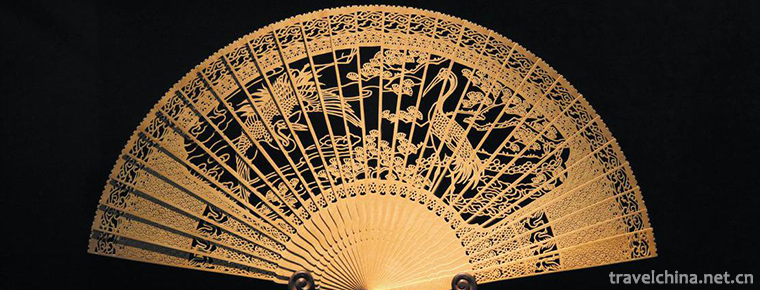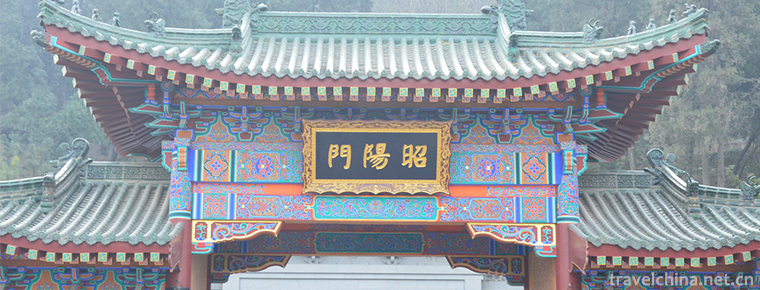2018-12-12

- By ChinaWiki.net
- Chinese Edition
- 2019-07-25
Fan making Techniques
Fan-making skills, Jiangsu Suzhou local traditional handicraft, one of the national intangible cultural heritage.
Suzhou Fan is a special product of Suzhou. It is famous for its elegance, delicacy and artistic characteristics. Including folding fan, sandalwood fan and silk Palace fan, collectively known as "Suzhou elegant fan". Since Ming and Qing Dynasties, Sufan has been widely spread in Suzhou and its surrounding areas. Suzhou Elegant Fan combines all kinds of exquisite crafts, including modelling, mounting, sculpture, mosaic, painting and other crafts.
On May 20, 2006, fan-making technology was approved by the State Council and listed in the first batch of national intangible cultural heritage list. Heritage number: _-81.
historical origin
Suzhou fans are Suzhou specialties, including folding fans, sandalwood fans and silk Palace fans. They are collectively called "Suzhou elegant fans". Since Ming and Qing Dynasties, they have been widely circulated in and around Suzhou.
In the Southern Song Dynasty, some people made folding fans in Suzhou. In the Ming Dynasty, Xuande set up workshops to produce folding fans. Famous-brand products, such as black bamboo, bone and mud gold fans, appeared. During the Shunzhi period of the Qing Dynasty, Su Fan became a royal tribute, and the fan-making industry began to flourish.
Since the 1980s, people's lifestyle has changed dramatically. The emergence of electric fans and air conditioners has dramatically reduced the importance of fans. During the late Qing and Republic of China period, there were hundreds of Suzhou Fanzhuang and Wenju shops operating Suzhou Fan Bones, leaving only two places, Wang Xingji and Douyun Xuan. There are only three or four local fans in Suzhou, some of which are on the verge of being lost.
Technological characteristics
Suzhou has always had a fan-making tradition. Folding fan, sandalwood fan and silk palace fan are also called "Suzhou elegant fan". "Wuzhu Bone Mud Golden Fan" is the representative. Sandalwood fan is developed from folding fan. Sandalwood fan gives out natural fragrance. In the birthplace of sandalwood fans in Suzhou, drawing, scalding, carving and painting are adopted. The fans are painted with landscape, flowers and birds, which are leisure and elegant. Silk Palace Fan, mainly round, hexagonal, rectangular, waist circle and other shapes, painted with landscapes, flowers and birds, figures and other paintings, but also inscribed with celebrity poetry, antique, very ornamental.
Suzhou Elegant Fan combines all kinds of exquisite crafts, including modelling, mounting, sculpture, mosaic, painting and other crafts. They concentrate on the landscape, flowers and birds of Wudi, and their exquisite craftsmanship itself constitutes a splendid chapter in Wudi culture.
The fan bone and the fan surface are the main body of the fan. The key to making fan bones is elaboration and elaboration. In the south, bamboo is mostly used as the material of fan bones. Through a series of processes, such as selection, boiling, drying, splitting, shaping and baking, the fan bones are beautifully decorated by polishing and polishing, and then carved and inlaid. In addition to bamboo, fan bones are made of superior wood such as ebony, rosewood, sandalwood, Nanmu, chicken wings, poplar, peach and silk wood, as well as animal bones, tortoise shells, horns and even metals. During the Ming and Qing Dynasties, fan-making became more and more exquisite. Literati ink fan and painting fan have become a fashion, such as Shen Zhou, Wen Zhengming, Tang Yin and Qiu Ying, who have created a large number of fanned calligraphy and painting works. Because of the participation of literati and refined scholars, carving calligraphy, seal carving and pattern on fan bones not only promotes the skill of making fan bones, but also enhances the artistic value of the fan - the delicacy and meticulousness of the sculptor, which embodies the elegance and taste of the fan, complements each other with the fan art and becomes a unique art form.
Famous for its rich variety and exquisite workmanship, the bamboo folding fan bone is smooth, elegant and simple after polishing. With the development of history, the shape and decoration of the water mill bone jade folding fan are becoming more refined and elegant. The fan bone has been improved and developed from the "sixteen sides" to the slender and elegant "eighteen sides". There are dozens of kinds of flower-colored fan heads, such as eggplant, ancient square, swallow tail, magnolia, plum blossom and bamboo knots. Fan-making artists use grinding, lacquer, carving, inlaying and shallow carving, deep and other skills on bamboo bones, carving flowers, birds, insects, grass, landscapes, figures, Bogu, fairies, coins, Zhong Ding seal and poetry and songs, plus famous painting seals, making the fan more beautiful and precious.
Technological process
Sufan is the general name of folding fan, sandalwood fan, silk palace fan and paper ball fan in Suzhou. Suzhou folding fan bone material is very exquisite, mainly bamboo, and ivory, tortoise, red sandalwood, ebony and so on. In addition to boiling, drying, baking, scraping, dragging, pouring and grinding, the water-grinding bamboo bone should be polished and dried with wet Equisetum, polished and polished with elm leaves, and finally polished with white wax. If carved with calligraphy and painting on it, it will add to the beauty.
Sandalwood fan is refined through more than ten processes, such as saw blade, assembly, cladding and pasting.
Inheritance and Protection
Inheritance value
The elegant fan in Suzhou is practical, and it is a kind of art closely combined with poetry, calligraphy, painting, sculpture and other arts. It has high ornamental value.
Heritage figures
Xu Yilin, male, Han nationality, was born in October 1933 in Suzhou, Jiangsu Province. In June 2007, Xu Yilin was selected as the representative successor of the first batch of national intangible cultural heritage projects and declared in Suzhou, Jiangsu Province. Project Name: Fan Making Skills.
Xing Weizhong, male, was born in August 1954. In December 2012, Xing Weizhong was selected as the representative successor of the fourth batch of national intangible cultural heritage projects, which was declared by Suzhou City, Jiangsu Province. Project Name: Fan Making Skills.
protective measures
In recent years, a group of Zhejiang, Hangzhou, senior and intermediate arts and crafts masters, most of whom are highly skilled, often represent Chinese folk arts and crafts to Russia, Spain, Japan and their counterparts in Taiwan and Macao, China, to participate in exhibitions, performances and cultural exchanges.
On October 25, 2014, CCTV released a documentary of Gusu's stunning folding fan production of "Keeping Handicraft".
On September 28, 2017, CCTV's "Discovery" program released a documentary "Chinese Skillful Workers (Five) Su Fan".
social influence
Important activities
On October 25, 2016, the "Qingfeng Xulai" Invitation Exhibition of Famous Painters and Calligraphers in Suzhou was held in the Gallery of Suzhou Antique City, inheriting and promoting the culture of Sufan.
On June 22, 2018, Mudu Town Rural Work Bureau and Tianchi Village of Wuzhong District of Suzhou jointly launched Wumen Fan Handicraft Painting Fan Experience Activity. The experiencer exchanged and interacted with the fan-making artists and teachers, and learned how to make the fan, so as to feel the charm of the traditional culture of the fan. Through this activity, not only deepened the communication and exchanges between the Agricultural and Industrial Bureau and Tianchi Village, but also let the Experiencers understand the essence of Wu culture and the development history of Sufan. While enriching the spare time life of female compatriots, it also enhanced their national pride and cultural self-confidence.

Ask a Question
Your email address will not be published.



0 Questions